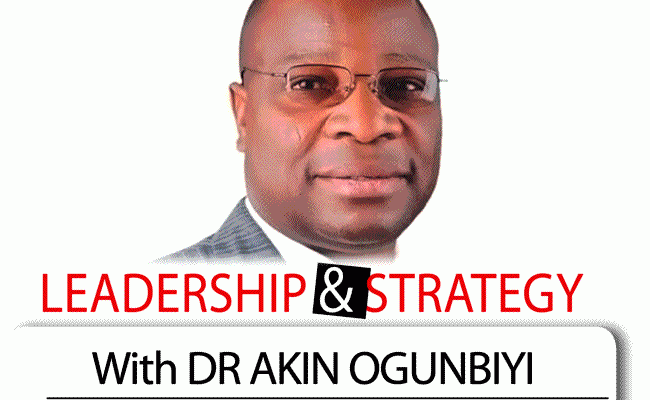I was going to give this write-up the descriptive heading of “Economics of Palliatives” but I felt strongly, that with the recent happenings in our country, Nigeria, this could be misconstrued. Let me, however, commend the ongoing genuine efforts to mitigate the ravaging hunger and poverty in our land.
Not too long ago, selling with analytics was the order of the day. Revenues, processes and even differentiating reputation were given a boost dramatically by analytics. In business organisations, data and technology moved from their usual positions as supporting tools to become overarching strategies that embraced decision-making at all leadership levels.
The dramatic power of prescriptive technology upended customer expectations and shot-up profitability as well as growth to unprecedented levels. Organizations competed effectively on process differentiation, customer needs and preferred prices. Also, triggers for increased purchase, lifetime values and employees’ contributions to the bottom line.
But today, the prescriptive role of technology and big data is “progressively” taking the back seat. It is the dawn of behavioural economics in selling. Human actions are determining sales’ tools and strategies and the reason is the challenging societal austerity.
Let me go through the process historically. Selling as an action was scientifically described as the function of inputs generating outputs. Win rates by way of revenue inflows and business growth were generated by people (with sales leads), resources and tools. Management of variables in the equation determined the outcomes. Salesmen converted opportunities into wins.
Win-rates were calculated by the winning requirements per customer. Also, to successfully up the ante, exponential impact was revved up by exponential proportion of selling efforts. You win by “design”. Just make the process better and faster, then you automatically triumphed over competitors. Sales professionals, in addition, achieved game-changing “moments” by knowing the customer better, controlling costs and maximizing deliverables.
The next glorious stage was the identification and engagement of the customer as organisation’s “hidden wealth”. Also, business leaders started working with the customer’s distinct advantage and engaged effectively with the customer as “a crucial stakeholder”. Growth efforts did not just stop at getting customers to the market, selling and creating products/services for them, but also working very hard on maximum returns on customer relationship (ROR). Customers started prospecting, speeding up product adoption, improving customer experience (CX) and guaranteeing lifetime value.
Customers can even be brought into the growth process by engaging with them as advocates, influencers and overall value contributors.
Let us now move on to our topic: The prevailing harsh economic situation and customer’s ability to pay for goods and services. We can also refer to this as the shrinking “Size of wallet” (SOW).
In behavioral economics, ability to pay is the maximum price at or below which a customer will buy a unit of product or service. Adjusting price to individual customer’s ability to pay (or affordability) definitely requires price discrimination.
Simply put, price is a function of customer’s ability to pay and of course, the trade-off between price and volume.
Also, there are obvious constraints to price adjustments. These include; quality, opportunity cost, product or service profitability, marketing costs, product development costs and sunk cost.
How do we then manage the present progressively shrinking size of wallet? Michael Haenlein, Professor of Marketing explained that a key aspect of customer relationship management is to treat customers “deservedly” in order to achieve maximum value. His advice is: “treat them deservedly not just appropriately”.
Creating sustainable competitive advantage as a smart organization therefore, requires management of the share and size of “wallet” or selling with affordable value enhancement. Can organisations “deservedly” adjust prices and still deliver expected beneficial products and services? Is it possible to genuinely meet customers’ expected benefits and still maintain organization’s value extraction strategy? Can we deliver these pricing strategy and tactics at the same time and also keep pace with compelling customer experience?
We must assiduously gain and effectively utilize insights into active customers and reasonably manage pricing, products and services. We can rely appropriately on the economic value customers create. Tactical elements such as costs, competition, pricing impact, among others, can be managed for relevant results. Let us realistically factor-in the price sensitivity of customers and adjust prices accordingly. We can be cautious and guide against data bubbles and pragmatically utilize product/service matrix multiplication and lifetime value. We need to understand, appreciate and act appropriately, on these systemic issues of poverty and hunger among vulnerable customers and customer-communities.
Consultative and outcome selling strategy can be very useful. Organizations should focus and very well understand not only customers’ needs but also the pain points.
The outcome selling strategy relies on deeper relationship building, active listening, value-adding understanding, in-depth customer lifetime value search, and outcome-related solutions. Organisations can drive the much-needed revenue with the mindset that: “little drops of water make a mighty ocean”. Relationships with the customer must be meaningful. The beauty of trusted relationships is that, organisations will surely upsell, reduce and even prevent churn, no matter how harsh the economic situation may be.
Let me conclude by pointing out that life rewards value-adding and beneficial actions and not egoistic display of intelligence. Organizations cannot achieve profitability without revenue and revenue cannot be created without customers. Leaders of organizations, as I mentioned in last week’s column, must faithfully and positively contribute to customer’s quality of life. We must deliver reference value as well as differentiating value. Hunger and poverty must not be substitutes for beneficial products and services.
READ ALSO: Selling smart







